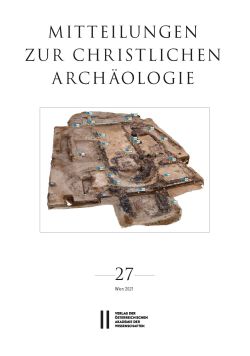
Mitteilungen zur Christlichen Archäologie 27, pp. 95-110, 2021/11/04
Textual and archaeological evidence confirms the use of fetuses in sorcery and magic in Roman Egypt, a practice that early Christians continued. A papyrus from Karanis (Fayum oasis) and the cords used in wrapping buried fetuses confirm this assessment. Such cords of beads were wrapped around a fetus excavated in Kellis 2 cemetery (Dakhla oasis) and an infant discovered in el-Bagawat (Kharga oasis). However, the Christians showed more interest in burying their children, even their fetuses, irrespective of their magical use. This transformation is based on the Christian belief concerning the identification of the soul and body. Every fetus was carefully buried in the same manner as adults. The deceased fetus was individually wrapped and placed in a grave oriented east-west. Christian fetal burials were found in Dakhla and Kharga, two oases of the Egyptian western desert. In the Dakhla oasis, the Kellis 2 cemetery, north tomb 1, cemetery D 7, and House 4 (Area A) are the most prominent areas in which this type of grave was discovered. Concerning Kharga oasis, early Christian fetal burials were excavated in el-Bagawat necropolis. According to their architectural design, four types can be categorized: homeburials, pit graves, funerary mausolea, and finally enclosure graves.
Keywords: Christian, fetus, burial, magic, oasis